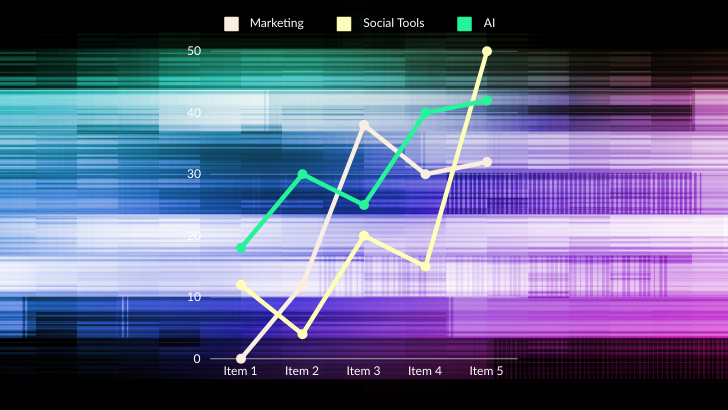Many industries have seen dramatic business shifts during 2020 which have led to an accelerated need for IoT solutions. In parallel, the skills necessary to develop IoT solutions have become more challenging to find. One answer to addressing the chasm of increased demand for IoT solutions and challenging availability of skills is low-code development. Beyond the pragmatic need for skills, low code advantages are strategic and transformational. Gartner addresses the strategic nature of Low Code Application Platforms (LCAP) and states that “by 2023, over 50% of medium to large enterprises will have adopted an LCAP as one of their strategic application platforms.[1]”
The IoT industry is undergoing a strategic shift. For digital transformation to occur, IoT solution components will become an integral part of the company’s products and processes. This is similar to the integration of embedded software components into products and services, across industries. The integration of embedded IoT components into products and services will change customer experiences and create competitive advantages. Low code application platforms enable the integration of IoT components into the overall solution across the enterprise.
For example, a large commercial insurance company is responding to customer demand for remote monitoring of equipment in commercial buildings. Monitoring the equipment once required numerous person-hours and the process was error prone due to the number and location of devices and the repetitiveness of the tasks. The company installed IoT-based remote monitoring of the sensors with machine vision capabilities. The company realized improved performance of a factor of 6 with this IoT solution because the inspection of the numerous and hard to find devices is automated. Additionally, their workers are protected as they may now remotely monitor the sensors using cloud-based dashboards and take appropriate actions. How did the insurance company achieve these gains? They created solutions using a low code application development platform for IoT solutions from Prescient Devices, Prescient Designer.
As companies achieve digital transformation using IoT solutions, they typically undergo three phases:
- Phase 1: Visibility – companies now see equipment operation in real time so that they may monitor and perform fault detection.
- Phase 2: Discovery – leveraging initial results and data, companies go deeper and have new realizations. They see how customers use their products and may change products based upon customer usage, data or interactions.
- Phase 3: Transformation – when analyzing results from the Discovery Phase, companies typically find one or a few results that are transformational – perhaps to the products, business models, product mix, support or sales. In our experience, none of our customers realized that IoT was transformational when commencing their project. However, once implemented, our customers realize that they have valuable information and use those data to make strategic and transformational changes to products or business models.
Many companies across industries need IoT solutions, but may find beginning to be difficult. Prescient Devices suggests using low code as an answer and are available to guide companies through all three transformational phases.
Low code growth goes beyond our experience with our customers. Leading analysts support the assertion that low code development is accelerating. Gartner forecasts low code to increase its share in application development activity to 65%, with three-quarters of large enterprises running on multiple low-code development tools by 2024[2]. Similarly, a market study by Forrester[3] expects the market for low-code development platforms to increase to $21.2 billion by 2022, up from $3.8 billion in 2017. This growth also leads to M&A activities in the market as well.
What is really driving low code development growth? Here are three of the most common benefits.
Benefits
Continuous discovery and learning: companies who enable internal learning with AI based solutions see a success rate of 73%. The key to this success rate is agility in application development. Without internal learning, the success rate is 11%[4]. Low code application development platforms, such as Prescient Devices’ Designer, enables application development with continuous discovery and learning.
Development agility: Agility is indeed a key success factor. Forbes tells us that agility might be the first pillar of low-code development. It’s faster to build apps with low-code using pre-built modules in the visual environment. This allows more agility with cutting down the time spent on application development. Most of the low-code platforms run in the cloud; this also automates most of the processes while iterating the application.[5]
Cost: Cost is a significant element of low-code development. Low-code solutions require less engineering efforts thus lowering costs. Additionally, developer skills can be applied differently resulting in more code development with an array of developer skills. Rather than decreasing the need for developers or eliminating jobs, low code is changing programmer jobs and offering a way to remix skills to improve cost structures and efficiencies. Low-code development platforms provide extensive common modules. Companies may hire less expensive talent with minimal training who can create low code-based solutions. More highly skilled resources can perform more complex tasks. Prescient Devices’ common IoT modules, based upon Node Red, provide rich tools for less advanced developers to quickly create solutions. Advanced developers appreciate Prescient Devices capabilities to easily add custom code to common modules. PDI provides companies competitive advantages as they develop IOT solutions at less cost and more efficiently.[1]https://www.gartner.com/en/documents/3956079/magic-quadrant-for-enterprise-low-code-application-platf
[2] https://www.gartner.com/en/documents/3956079/magic-quadrant-for-enterprise-low-code-application-platf
[3] https://www.forrester.com/report/The+Forrester+Wave+LowCode+Development+Platforms+For+ADD+Professionals+Q1+2019/-/E-RES144387
[4] https://www.fierceelectronics.com/electronics/just-11-companies-using-ai-reap-significant-financial-roi-study-finds?utm_medium=email&_hsmi=103877570&_hsenc=p2ANqtz–C9PJOqspirkTK0M9uIaU8pzCAdW2UIgCYBqi4dnGar_p7X24WAYCc8wN-DmRhVZlGyZQPYEBfEVXxT_BGUGqQ8RHtXNW3PGamWii1qQ8xN0sdQjE&utm_content=103877570&utm_source=hs_email
[5] https://www.forbes.com/sites/ilkerkoksal/2020/04/29/the-rise-of-low-code-app-development/#531943a06807
___
This post was originally published on the Prescient Devices blog.




